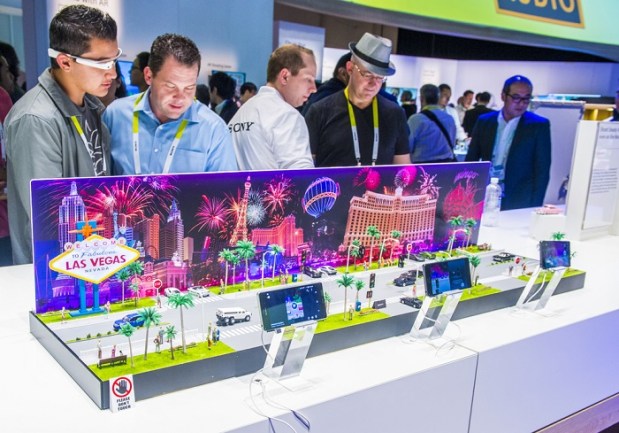CES ’16: The Good, The Bad And The Ugly (So Far)

It’s somewhat ironic that though the Consumer Electronics Show regularly brings thousands upon thousands of new gadgets to the floors of Las Vegas’ convention centers, it’s usually journalists rather than consumers that get to tinker with all the digital toys the rest of the market has to wait for. Fortunately, all those tech experts, beat reporters and bloggers that descend upon Sin City every January aren’t shy about sharing their opinions on whether what they see at CES amazes them, bores them or just plain creeps them out.
The Good
After waiting for months to release more details on the consumer version of its Rift virtual reality headset, Oculus wasted no time and announced that the first public Rift release would have models set at a $599 price point. Speaking to the BBC, IHS Technology Analyst Piers Harding-Rolls explained that while this might seem like a steep investment for a consumer electronic that doesn’t have a ubiquitous following yet, Oculus is focusing on more of a subset of the gaming and entertainment community with its first consumer Rift release.
“Early-adopting PC gamers are likely to be less price-sensitive,” Harding-Rolls said. “This is the type of audience that spends $400–$500 every other year on graphics cards and large amounts on games.”
Just about every company is making some announcement or another from the opening bell of CES to the last power cycle on the demo booths, but the timing of some makes one think: With so many people about to start strapping VR headsets over their faces, how are they going to interact with the world around them? As The Verge explained, they won’t have to.
If there’s one cross-product, cross-brand trend at CES 2016, it’s the rise of autonomous machines. Not only are multiple companies showing off advancements in self-driving cars, but this year’s convention has also seen self-navigating drones, in-home robotic personal assistants and more. This category of self-sufficient devices could also arguably include the growing number of “smart” IoT devices that are increasingly being taught to think for themselves. For example, after a few initial input actions, smart thermometers can adjust whole homes based on predicted preferences, removing the need for users to do anything but come home, slap their $599 Oculus Rift on and let the Internet of Things take care of dinner.
The Bad
CES shows the sexy side of the tech world — flashy gadgets displayed in professionally lit booths with paid models showing them off. The infrastructure that allows all of these toys to work together (or at all) gets much less attention — both because it’s just not as visually appealing and because, as CNET explained, it’s nowhere near ready to support the ambitious gadgets being shown off at CES 2016.
Think about it for a minute. Self-driving cars and autonomous drones require not simply a good connection or even a fast connection. While 4G speeds might be enough to satisfy consumers’ entertainment demands — although even some cellphone providers struggle to ensure smooth Netflix streaming — they’re woefully inadequate for the dreams of CES 2016. Imagine driving down a country road when the self-driving car’s signal cuts out. Sure, losing a phone signal just means no Facebook for a few minutes, but losing navigational uplinks, if only for a second or two, could lead to disaster. And that’s not even including the terror in the skies that would be self-flying drones on 4G.
There is hope, though. Ed Tiedemann, senior vice president of engineering at Qualcomm, told CNET that faster speeds capable of powering an autonomous world are on the way!
In 2020, at the earliest, that is.
The Ugly
Like any trade show, CES attracts a good number of big brands and aspiring startups that have toiled on legitimate products and that other tech reporters eagerly want to pick apart. And then, there are the other guys.
CNNMoney has a roundup of the slightly off-kilter CES products this year, which includes Mother, the all-in-one home sensor that evokes the calm and surveilled serenity of Hal in “2001: A Space Odyssey.” This babushka-inspired device can purportedly run a home like a well-oiled machine by helping everyone to brush their teeth more efficiently and remember to take their medications. It can also watch users as they sleep to critique their nighttime habits — or, presumably, to kill.
Mother pales in comparison to what FirstResponse — the maker of OTC at-home pregnancy tests — brought to the CES 2016 showfloor. While medical technology has made childbirth safer than it’s ever been, the process of discovering a pregnancy has remained decidedly low-tech. No longer, though, thanks to FirstResponse’s Bluetooth-enbaled pregnancy test and accompanying smartphone app. Gone are the days of deciphering between single or double lines. After giving the app some basic information (such as whether the user actually wants to be pregnant), it delivers the appropriately tailored happy or problematic news.
